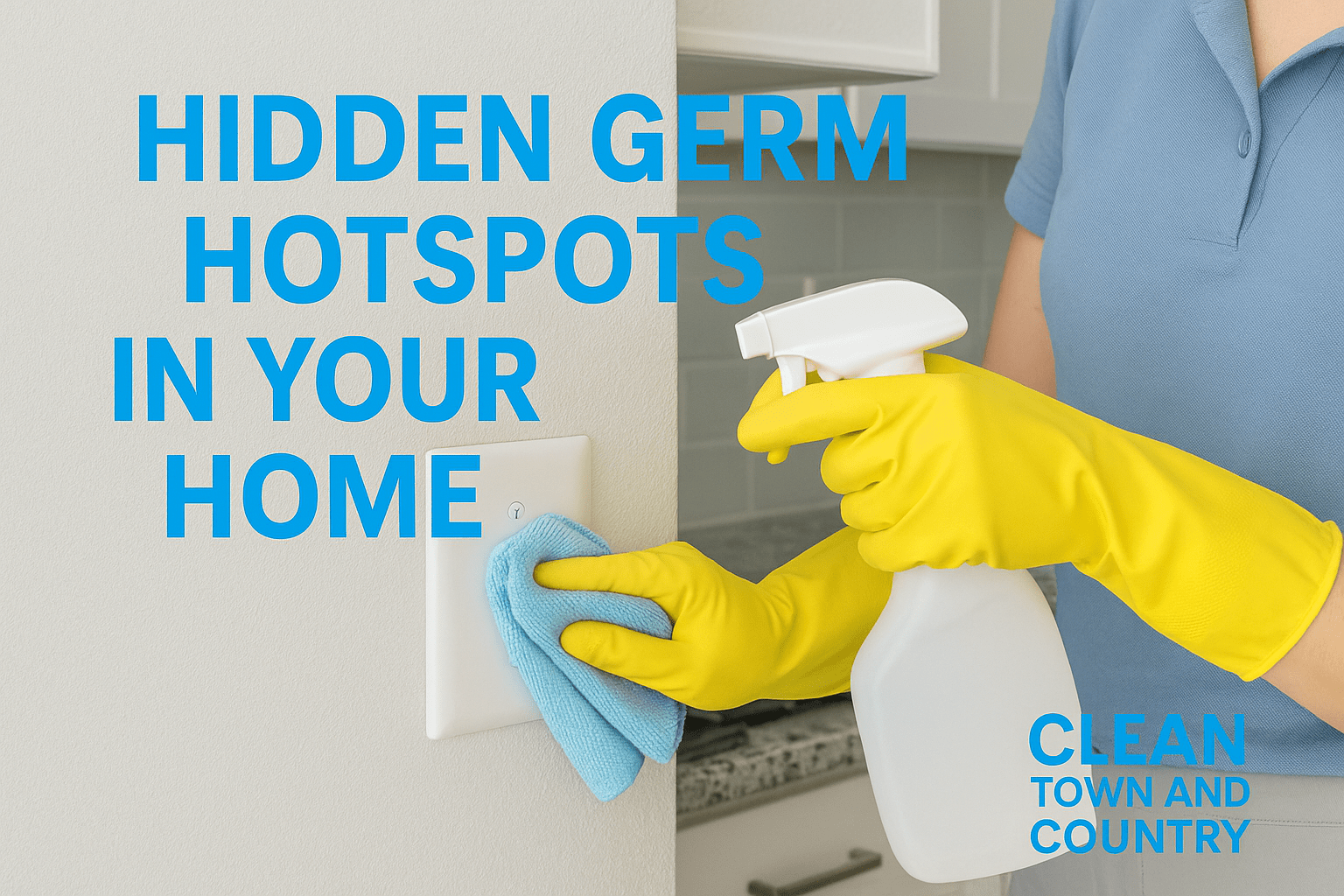
Hidden Germ Hotspots in Your Home (That You Never Thought to Clean)
Most people think their homes are clean—but are they really? While it’s easy to scrub visible messes, some of the most dangerous bacteria hide in places you’d never suspect. At Clean Town and Country, we’ve seen it all—and we’re here to share the most overlooked germ zones and what to do about them.
Why Germs Love These Overlooked Areas
Warm, Moist, and Frequently Touched = Germ City
Bacteria thrive in warm, damp, and high-touch environments. That’s why your kitchen sponge can host more bacteria than a toilet seat.
In fact, a 2017 study in Scientific Reports found more than 362 different species of bacteria living in used kitchen sponges source.
Cleaning vs. Disinfecting: What’s the Difference?
Cleaning removes dirt and grime. Disinfecting kills bacteria and viruses. Many homeowners wipe things down—but forget to disinfect the areas that need it most.
Top 10 Hidden Germ Hotspots Most People Miss
These items often go untouched during standard cleaning routines:
- Kitchen Sponges – Replace weekly or microwave damp for 1–2 minutes daily.
- Toothbrush Holders – Run through the dishwasher or soak in bleach water weekly.
- TV Remotes & Game Controllers – Use alcohol wipes; avoid water damage.
- Light Switches & Doorknobs – Disinfect weekly, especially during flu season.
- Fridge Handles & Water Dispensers – Clean daily in high-use homes.
- Reusable Grocery Bags – Machine-wash weekly or wipe plastic bags.
- Pet Bowls & Toys – Wash bowls daily and toys weekly.
- Laundry Baskets – Spray and wipe down after each load.
- Cell Phones & Tablets – Disinfect daily with screen-safe wipes.
- Shower Curtains & Liners – Wash or replace monthly.
The Germiest Places in Your Home
What is the germiest place in your house?
According to the NSF, it’s the kitchen sponge, followed closely by the sink drain and coffee maker reservoir.
What object has 100x more bacteria than a toilet seat?
Your cell phone. Yes—research shows that phones carry up to 17,000 bacterial gene copies per device source.
Germ Trouble in the Kitchen
- What kitchen item has the most bacteria? → The sponge and sink drain.
- Which three areas have the most bacteria? → Sink drain, cutting boards, fridge handles.
- What is the most hazardous thing in the kitchen? → Raw meat residue left on surfaces.
If you’re unsure how to clean your kitchen properly, let our weekly cleaning service handle it for you.
Bacteria You’ll Likely Find at Home
- E. coli – Found in sinks, cutting boards, pet areas.
- Staph – Lives on skin and can transfer to surfaces.
- Mold spores – Thrive in damp areas like bathrooms and basements.
- Clostridium botulinum – Can’t be killed by cooking; grows in low-oxygen spaces.
These microbes are especially stubborn and require professional-grade products like those used in our post-renovation cleaning services.
How to Properly Clean These Hotspots
Daily:
- Cell phones
- Kitchen sink and sponge
- Pet bowls
- High-touch surfaces (light switches, handles)
Weekly:
- Toothbrush holders
- Laundry baskets
- Reusable bags
Monthly:
- Shower curtains
- Under/behind appliances
- Ceiling fans and vents
Book a Professional Cleaning to Kill Germs You Can’t See
Don’t let invisible bacteria build up. At Clean Town and Country, our expert cleaners use disinfectants and protocols designed to eliminate harmful microbes in every corner of your home.
Choose from:
📍We serve homes in Town and Country, Clayton, Creve Coeur, Huntleigh, Ladue, Olivette, [Brentwood], and greater St. Louis.
📞 Call us at 314-888-5325 or book online today.
📧 Email: [email protected]
Frequently Asked Questions
What is the most germ-infested place in a home?
The kitchen sponge, followed by sink drains and toothbrush holders.
What bacteria are hardest to disinfect?
Spore-forming bacteria like C. difficile require hospital-grade disinfectants.
What household item has the most bacteria?
Cell phones often contain thousands of bacteria due to constant handling.
More blog articles:
Signs You Need a Deep Cleaning
